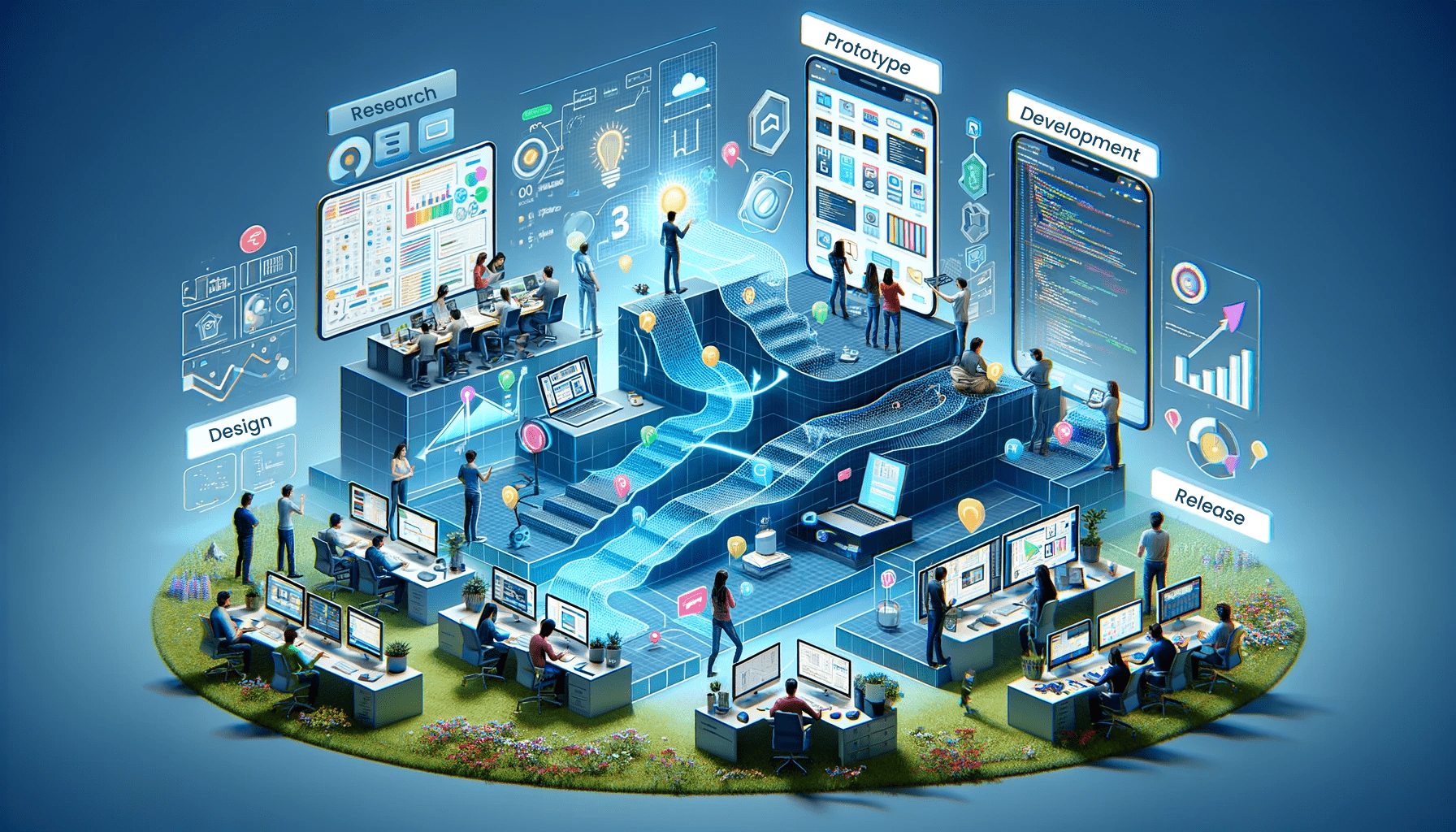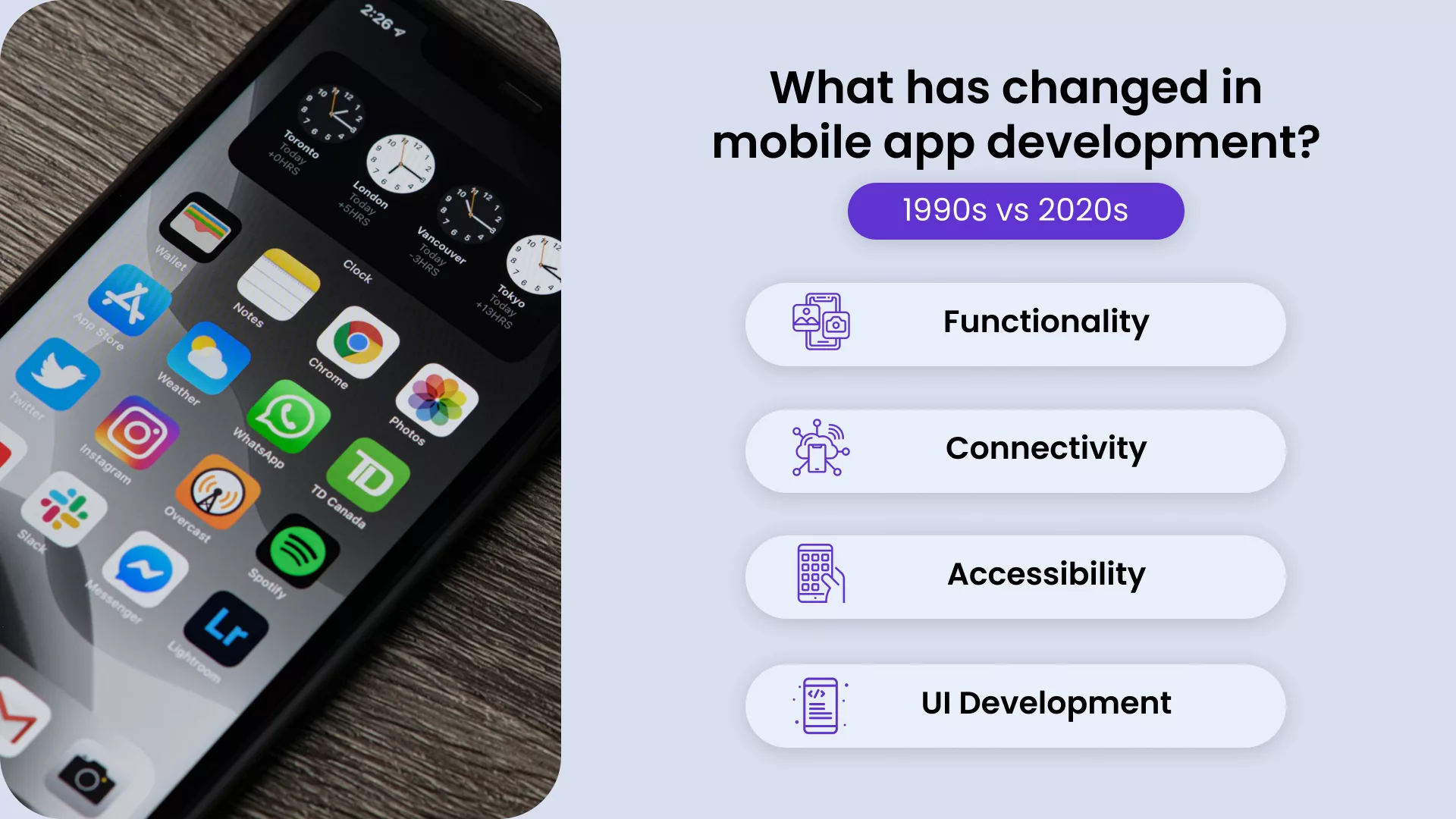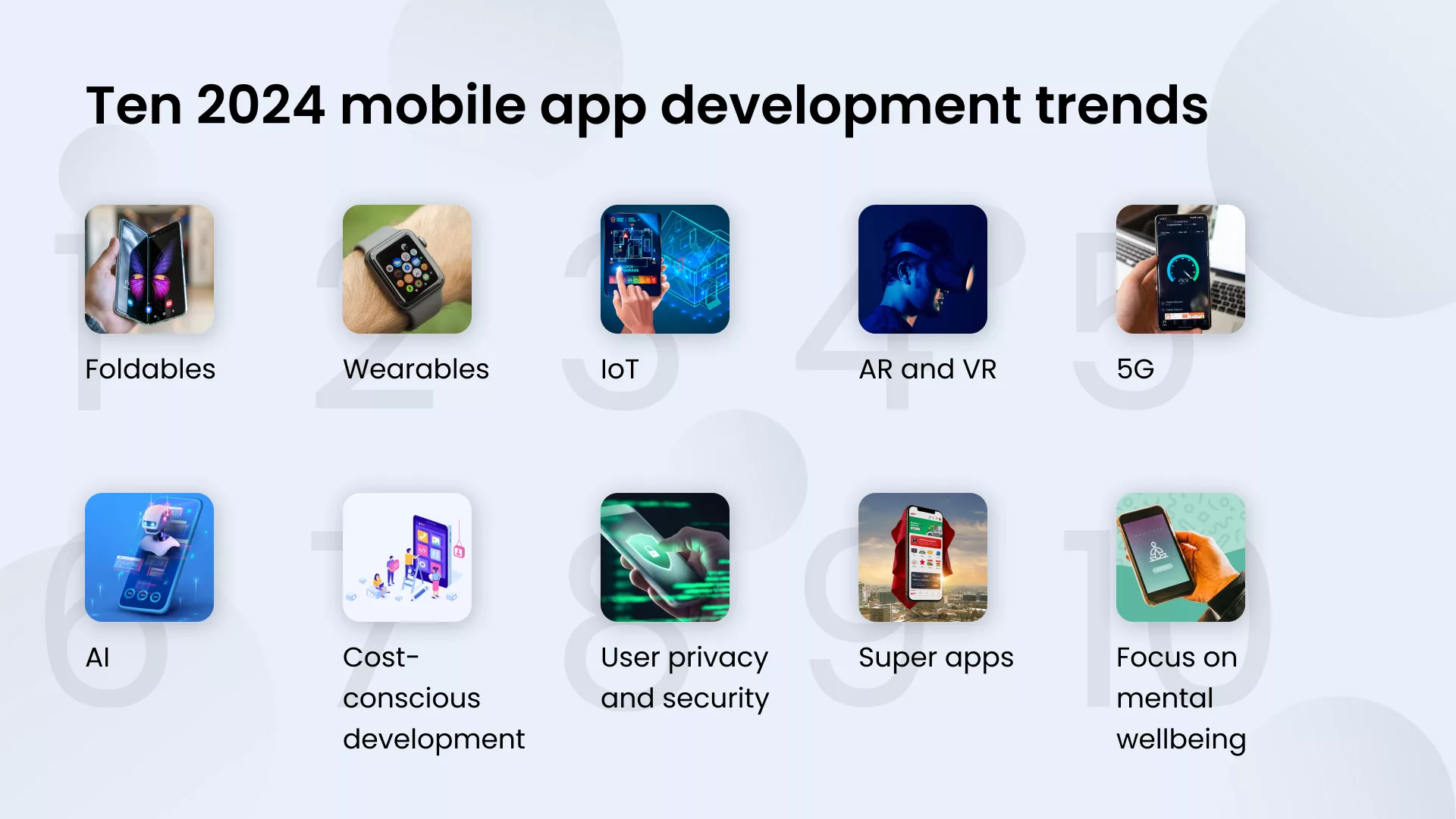
Mobile app development is the process of creating software applications that run specifically on smartphones and tablets. It is like building a toolbox for your phone. Each app is a specialized tool that helps you do something specific, from entertainment to communication to getting work done.
Key terms of mobile app development
Mobile app. A small software program designed for a mobile device. Imagine it as a mini-tool with a specific function, like a game, a fitness tracker, or a shopping app.
Development. The act of creating something new. In this case, it’s the process of writing code, designing the app’s interface, and making it work smoothly.
Smartphones and tablets. These are small, portable computing devices with touchscreens. They are more powerful than basic phones and can run various apps.
A bit of history
The first mobile app was created in the 1990s. However, due to differences in the “mobile app” definition, there are two contenders for the first-ever mobile app.
Built-in apps. In 1994, the IBM Simon Personal Communicator was considered the first true smartphone. It came pre-loaded with basic apps like Calendar, Address Book, Email, Calculator, and even a Notes app. These weren’t downloaded from a store but rather built into the phone’s system.
Downloaded game. Another contender is the game “Snake” pre-installed on the Nokia 6110 phone in 1997. This was a downloadable game in the sense it wasn’t part of the phone’s core functionality, but it wasn’t downloaded from an app store either.
Want to feel old? (Or way too young?) Check out a YouTuber playing Snake on two Nokia 6110 phones:
What’s the difference between the first mobile apps and the mobile apps of the 2020s?

Mobile apps have gone from basic tools to powerful mini-computers in your pocket. They offer a wider range of functionalities, leverage the power of the internet, prioritize user experience, and benefit from advanced development tools. Here’s a breakdown of the key differences between the first mobile apps and those of the 2020s:
Functionality
Early apps were focused on basic functionalities like calendars, address books, or simple games. They were limited by the processing power and storage capacity of early phones. 2020s apps offer a vast array of features and functionalities, from complex gaming experiences and advanced productivity tools to social media platforms and AI-powered assistants.
Connectivity
Early apps mostly functioned offline due to limited internet connectivity on early phones. 2020s apps often rely heavily on internet connectivity to deliver their full features. They leverage cloud storage, real-time updates, and integration with other online services.
Accessibility
Early apps were available on a limited number of phone models with varying operating systems. 2020s apps are designed to work across various phone models with standardized operating systems (like Android and iOS). They are readily available through centralized app stores with millions of options.
User Interface
Early apps had basic text-based interfaces or simple menus with limited graphics. 2020s apps prioritize intuitive and user-friendly interfaces with rich visuals, touch-optimized controls, and interactive features.
Development
Early apps were developed with simpler programming languages and limited tools. 2020s apps are developed using advanced programming languages, frameworks, and sophisticated tools that allow for complex functionalities and faster development cycles.
What are the development platforms (iOS and Android)?
Imagine you’re building a house. You wouldn’t use random bricks and mortar without a plan or the right tools, would you? In mobile app development, development platforms are like the blueprints and toolkits that help you build your app.
Development platforms are software environments that provide the tools and resources needed to create mobile applications. They offer pre-written code libraries, development tools, and frameworks to streamline the process. There are two main categories for mobile app development platforms.
Native platforms
They are designed specifically for a particular operating system (OS), such as iOS or Android. This allows for the best performance and access to all the features of that OS.
iOS development uses Xcode, Apple’s IDE, and the Swift programming language to build apps for iPhones and iPads.
Android development uses Android Studio, another IDE, and primarily the Kotlin programming language to build apps for Android smartphones and tablets.
Cross-platform development
These platforms allow you to create apps that run on multiple operating systems with a single codebase. This saves development time and resources but may have limitations in performance or access to certain device features. Among the most popular cross-platform development frameworks are React Native (which uses JavaScript to build apps that look and feel native on iOS and Android) and Flutter (which uses the Dart programming language to create visually appealing apps for various platforms).
Ten 2024 mobile app development trends

Mobile app development is constantly evolving, with new technologies and user expectations shaping how apps are built. Here are some of the hottest trends for 2024:
1. Foldables
Foldable phones are no longer a novelty, and apps are being optimized to take advantage of their unique form factor. Expect to see interfaces that adapt and expand on larger foldable screens, creating immersive user experiences.
2. Wearables
Smartwatches and other wearables are becoming increasingly sophisticated. We’ll see a surge in apps designed specifically for these devices, focusing on health and fitness tracking, mobile payments, and voice-activated controls.
3. IoT
Connecting everyday devices to the internet is creating a network of opportunities. Apps will play a central role in controlling smart homes, managing connected appliances, and personalizing user experiences based on real-time data.
4. AR and VR
With advancements in AR and VR technology, expect to see these features integrated into more apps. Imagine furniture shopping with AR to see how a couch fits in your living room or attending virtual concerts and events from anywhere in the world.
5. 5G
The rollout of 5G networks will unlock faster download speeds and lower latency. This paves the way for apps that require high bandwidth, like real-time video streaming, cloud gaming, and AR/VR experiences with minimal lag.
6. AI
Expect to see AI-powered chatbots offering customer service, personalized recommendations within apps, and voice assistants becoming even more intuitive and helpful.
7. Cost-conscious development
With the growing popularity of low-code/no-code development platforms, the barrier to entry for app creation is lowering. These platforms allow even those with limited coding experience to build basic apps, making development more accessible and potentially more affordable.
8. User privacy and security
Expect apps to prioritize robust security features and transparent data collection practices.
9. Super apps
Super apps are all-encompassing platforms offering a range of services, from messaging and payments to local business listings and transportation options. We might see a rise of these in specific regions.
10. Focus on mental wellbeing
Apps promoting mental health and well-being are expected to grow in popularity, offering tools for stress management, meditation, and sleep improvement.
« Back to Glossary Index

